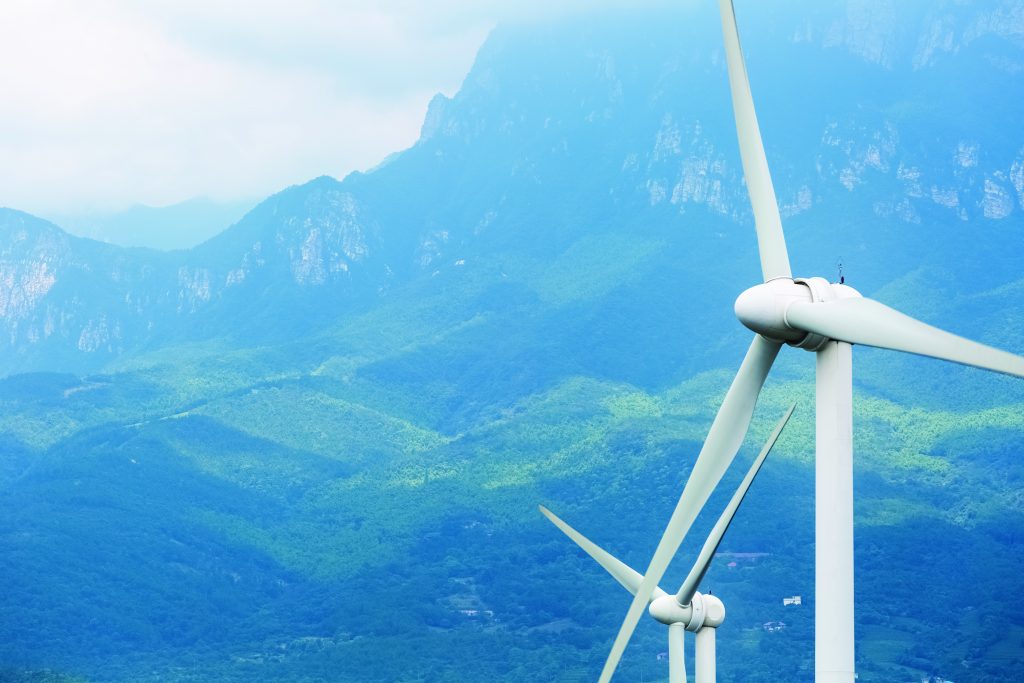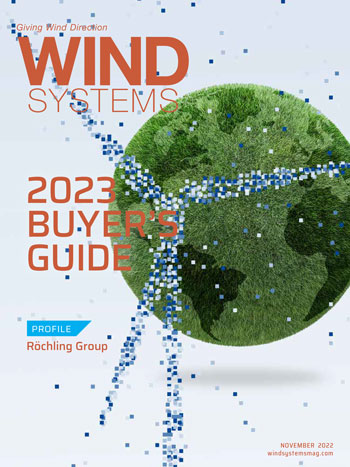Vaisala recently announced innovations to its WindCube Scan suite. What makes these innovations unique to what came before?
With WindCube Scan, the wind-energy industry benefits from a range of Lidar solutions specifically designed for their needs. A significant amount of work has been done to ensure the operational continuity of the system: There’s an innovative, reengineered scanning head that minimizes maintenance time, which increases uptime. The parts that need to be replaced are easily accessible on-site, and maintenance teams no longer need to replace the entire scanner head.
WindCube Scan also provides the ability to instantly swap to a backup SSD if needed while the Lidar remains operational. This capability, combined with an included three-year warranty, means that customers will not have to worry much about the downtime of their Lidar.
In addition to operational continuity, WindCube Scan delivers new measurements that have never been seen before: The volume scan to cover a 3D volume, the segment scan and the existing VAD scan. This new scanning functionality allows wind energy players to better capture the 3D spatial variations of the wind field. As the integration of Lidars into wind farms continues, the WindCube Scan suite empowers developers with greater insight into the microscale and spatial variations of the wind.
Why has Lidar become an important tool in a wind farm’s development and continued operation?
Lidar is too cost-effective — and flexible — a measurement technology for developers to ignore, especially as the hub heights of wind turbines continue increasing. The price of building a met mast escalates with turbine growth as decision makers need to conduct accurate, reliable measurements at higher altitudes. This applies onshore but especially offshore where Lidars have all but replaced traditional measurement alternatives in offshore environments.
Flexibility is a legitimate and significant boon for Lidars: Unlike a fixed met mast, decision makers can reuse them in other campaigns afterward. I’ve even heard of clients moving one or more Lidars around a particular site to reduce extrapolation uncertainties within a wind farm.
Lidar is already dominant in the development phase, and I foresee applications in the operational phase becoming much more commonplace in the near future. Power-curve testing with Lidars is already standard, but Lidars are also now facilitating short-term forecasting, wind-farm control, wind-farm wake (or blockage) analysis — all opportunities and applications where met masts struggle.
Vaisala collaborates with expert partners to reach project bankability levels and develops standardized practices, which has helped advance the acceptance of Lidar measurements in these new applications — even among the slow adopters of new technology within the industry.
 The latest WindCube Scan offers an enhanced laser design. What does this feature mean for wind measurement?
The latest WindCube Scan offers an enhanced laser design. What does this feature mean for wind measurement?
The improved laser chain ensures data quality availability and configurability at all ranges. What this means is a bit different between systems: For the 200S system, we can expect to see a considerably more extensive measurement range, and the 400S system has more flexible management of its spatial resolution. These capabilities enable developers to manage their micro- and macro-scale measurements more efficiently and ensure data quality at even shorter distances.
Along with this new laser chain, the WindCube Scan features new scan configurations focusing on 3D. As wind turbines reach taller heights and wind farms become denser and more enormous, WindCube Scan supports this ongoing industrywide evolution by providing accurate, comprehensive spatial wind data at any stage of a project.
Harsh weather conditions have been a potential problem for earlier Lidar designs. How does WindCube Scan help alleviate those concerns?
There’s been a lot of work put into improving the performance of the WindCube Scan in adverse conditions. This new version has increased water and dust resistance, which is especially useful offshore. The Lidar units are tested with salt spray on them and in humid and dusty environments. WindCube Scan has a better thermal-management system, enabling effective operation in temperatures up to 55 degrees Celsius.
The WindCube Scan also has a heated lens, which reduces the impact of humidity and frost in cold climates where an anemometer might become iced.
How does the WindCube Scan suite take advantage of Industry 4.0?
The WindCube Scan suite is built on its foundational best-in-class software suite and API, which enable direct integration into smart systems and easy and dynamic Lidar control.
Vaisala also has dedicated scientific support staff aiding clients in developing such solutions, and I think that is one of the key enablers of such innovation, to be honest.
Short-term forecasting is a perfect example of how WindCube Scan data can directly feed into the control system of not just a single turbine but an entire wind farm, allowing the smart operation of that farm according to its environment.
Another example is the dual scanning Lidar application, which highlights the simplicity of integrating other systems into the operation of the WindCube Scan. The dual scanning Lidar application is where virtual met masts are constructed offshore by combining the measurements of two onshore scanning Lidars. The position of these virtual met masts and the height of their virtual anemometers can be changed programmatically according to data from a larger system of measurements. Perhaps you want to change the position of your met mast according to the wind direction or alter the height at which you’re measuring according to the shear — all is possible with WindCube Scan.
The last point I want to touch on is the harmony that results from us being a part of this larger Vaisala organization. As the world-leading developer of environmental and weather measurement systems, we essentially have endless opportunities to benefit from a greater ecosystem of atmospheric measurements and data when building these solutions.
In what ways does the WindCube Scan suite help in remote locations that may have very little access to traditional measuring methods?
There are two main points with this new version that are very important: First, you can deploy WindCube Scan, through 4G connectivity, at remote locations, so you don’t need an Ethernet cable. Second, the Lidar also has reduced power consumption facilitating its power supply. These two barriers to deployment have been removed in this new version.
Another area where traditional measurement methods can sometimes struggle is in very complex terrains, such as mountainous regions. In these complicated environments, WindCube Scan excels because its measurements can detect complex flows. Lastly, in regions where traditional measurement methods have had trouble because of environmental concerns or even legal concerns: The ability to measure above the ocean, for example, without having to install a fixed-bottom — or even a floating — structure that would disrupt fishermen and wildlife and other stakeholders of the marine environment can be very valuable. This capability has been a significant aid, for example, in the Japanese market.
What’s been the industry reaction to the WindCube Scan so far?
The industry reaction has been very positive since the WindCube Scan enhancements directly targeted meeting — and exceeding — the needs of the wind-energy industry.
The WindCube Scan falling under the Vaisala umbrella is another positive aspect in our clients’ view. We have a phenomenal track record — with over 2,000 WindCube Lidars delivered globally — and a reputation for innovation and expertise, which helps provide peace of mind. We continually improve the reliability of the entire WindCube suite, and it is better now than it ever has been. Our global presence of factories, service centers, and distribution partners extends our first-class service to almost anywhere in the world. That’s how the WindCube Scan has become one of the most widely deployed and trusted Lidars around the globe.
More info www.windcubeLidar.com































